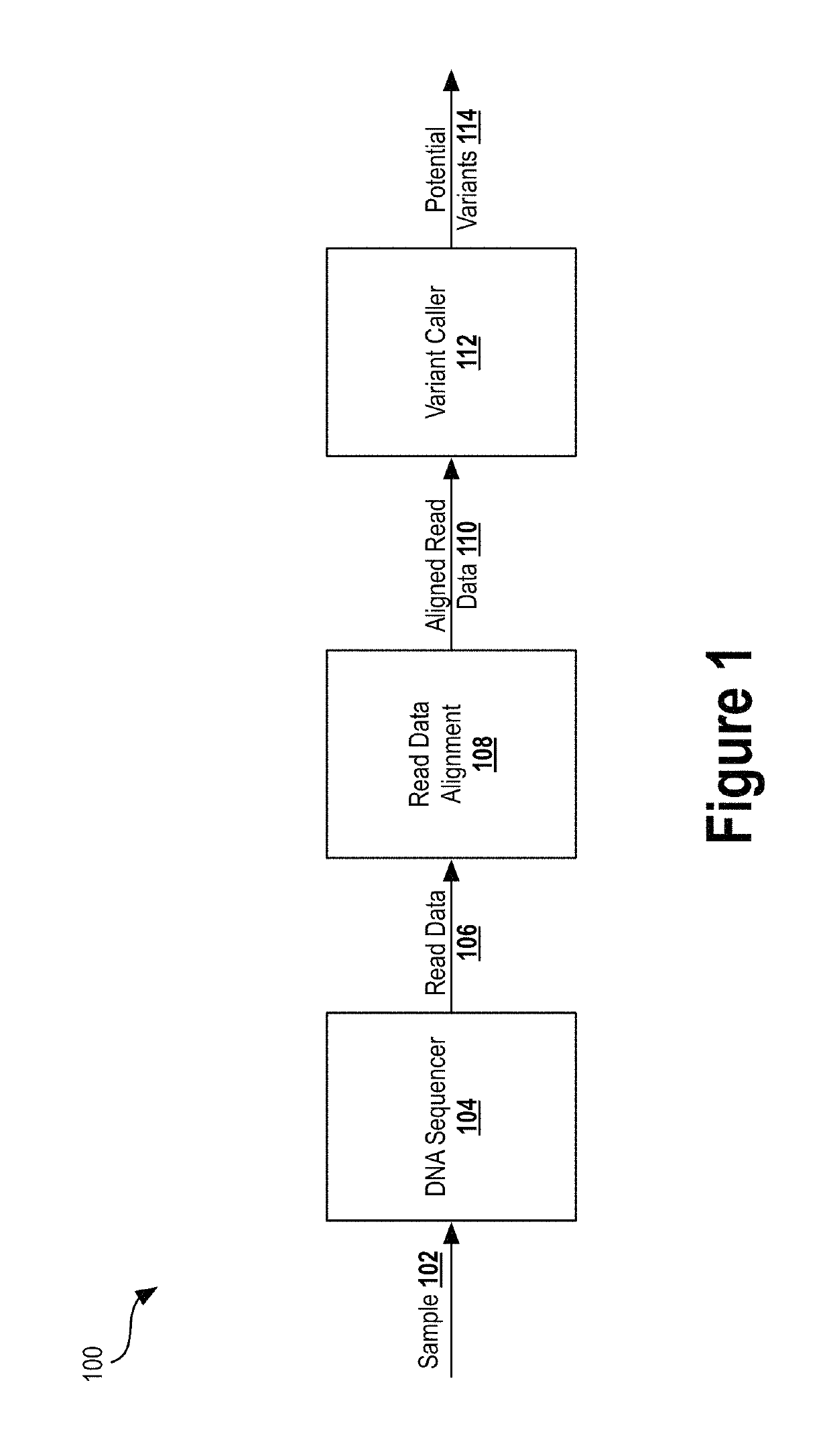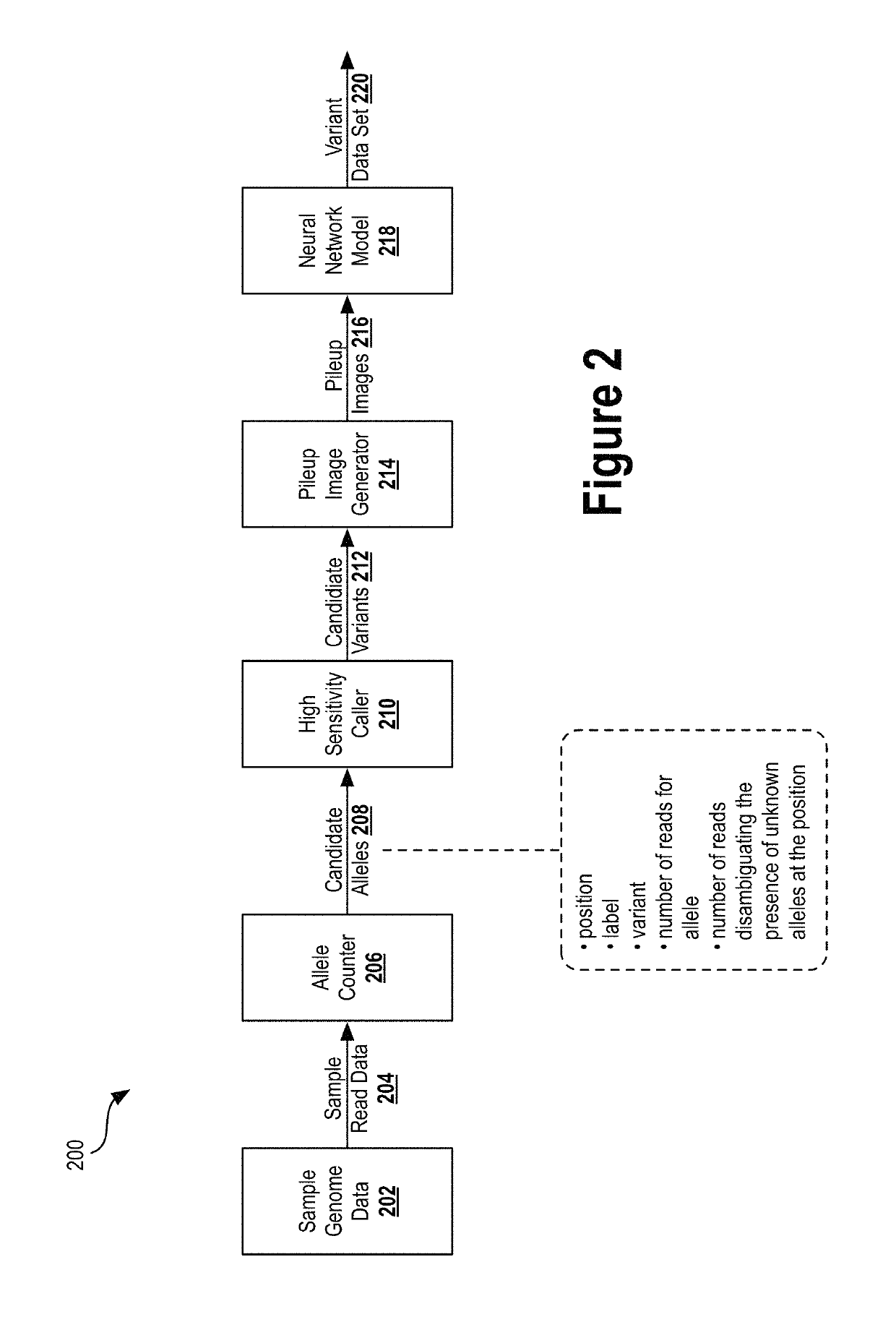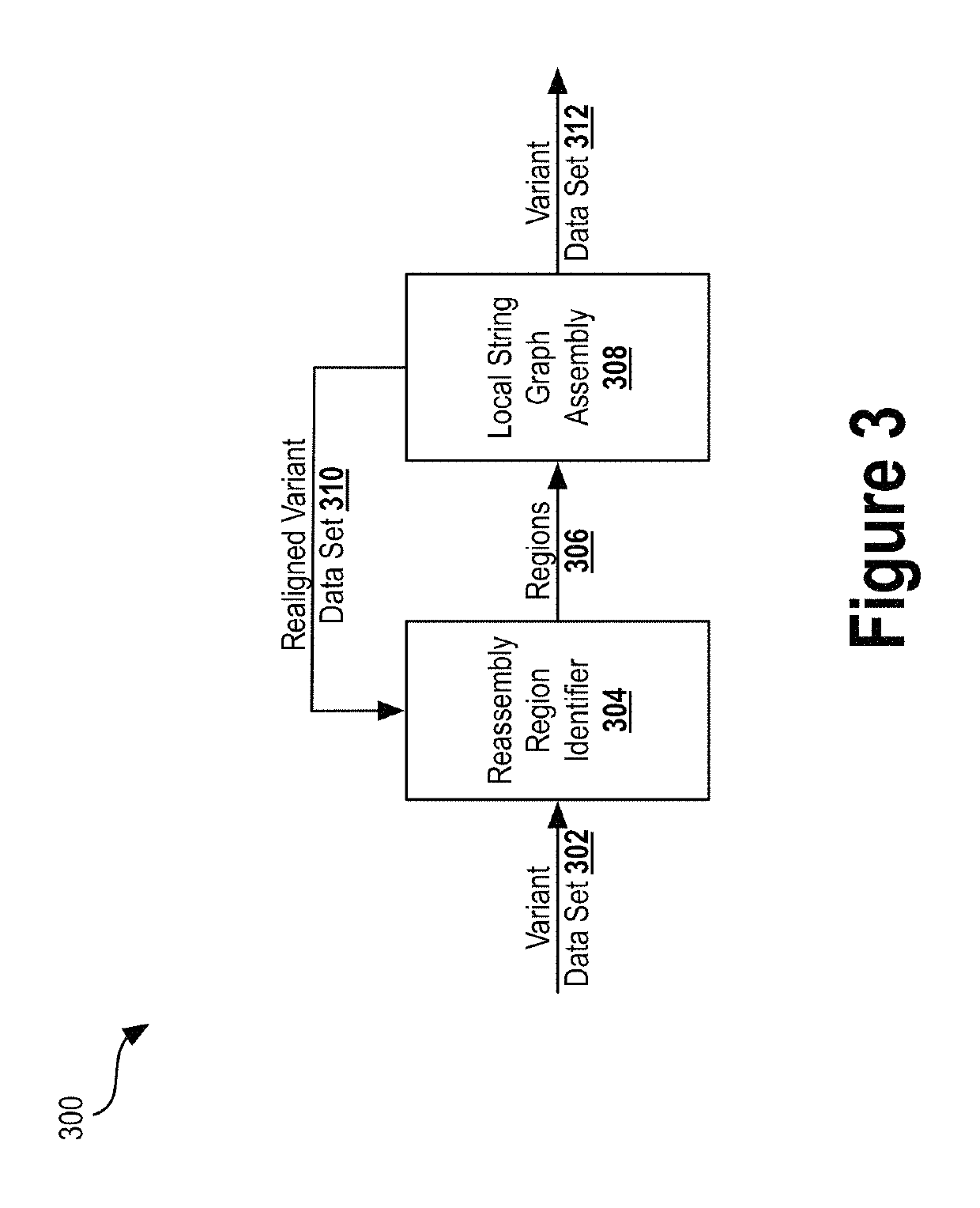Deep learning analysis pipeline for next generation sequencing
a pipeline and deep learning technology, applied in the field of deep learning analysis pipeline for next generation sequencing, can solve the problems of inability to detect variants correctly, and inability to detect non-existent variants, etc., and achieve the effect of limited false positive filtering using statistical models
- Summary
- Abstract
- Description
- Claims
- Application Information
AI Technical Summary
Benefits of technology
Problems solved by technology
Method used
Image
Examples
Embodiment Construction
[0030]The following detailed description describes various features and functions of the disclosed systems and methods with reference to the accompanying figures. The illustrative system and method embodiments described herein are not meant to be limiting. It may be readily understood that certain aspects of the disclosed systems and methods can be arranged and combined in a wide variety of different configurations, all of which are contemplated herein.
I. INTRODUCTION
[0031]Next generation sequencing (NGS) has dramatically reduced the time and cost required to sequence an entire genome. Previous techniques involved sequentially reading out DNA fragments and having trained biochemists arrange the read data to determine the sequence of entire chromosomes. NGS technologies substantially parallelize the sequencing process, allowing millions of DNA fragments to be read simultaneously. Automated computational analyses then attempt to align the read data to determine the nucleotide sequence...
PUM
 Login to View More
Login to View More Abstract
Description
Claims
Application Information
 Login to View More
Login to View More - R&D
- Intellectual Property
- Life Sciences
- Materials
- Tech Scout
- Unparalleled Data Quality
- Higher Quality Content
- 60% Fewer Hallucinations
Browse by: Latest US Patents, China's latest patents, Technical Efficacy Thesaurus, Application Domain, Technology Topic, Popular Technical Reports.
© 2025 PatSnap. All rights reserved.Legal|Privacy policy|Modern Slavery Act Transparency Statement|Sitemap|About US| Contact US: help@patsnap.com



